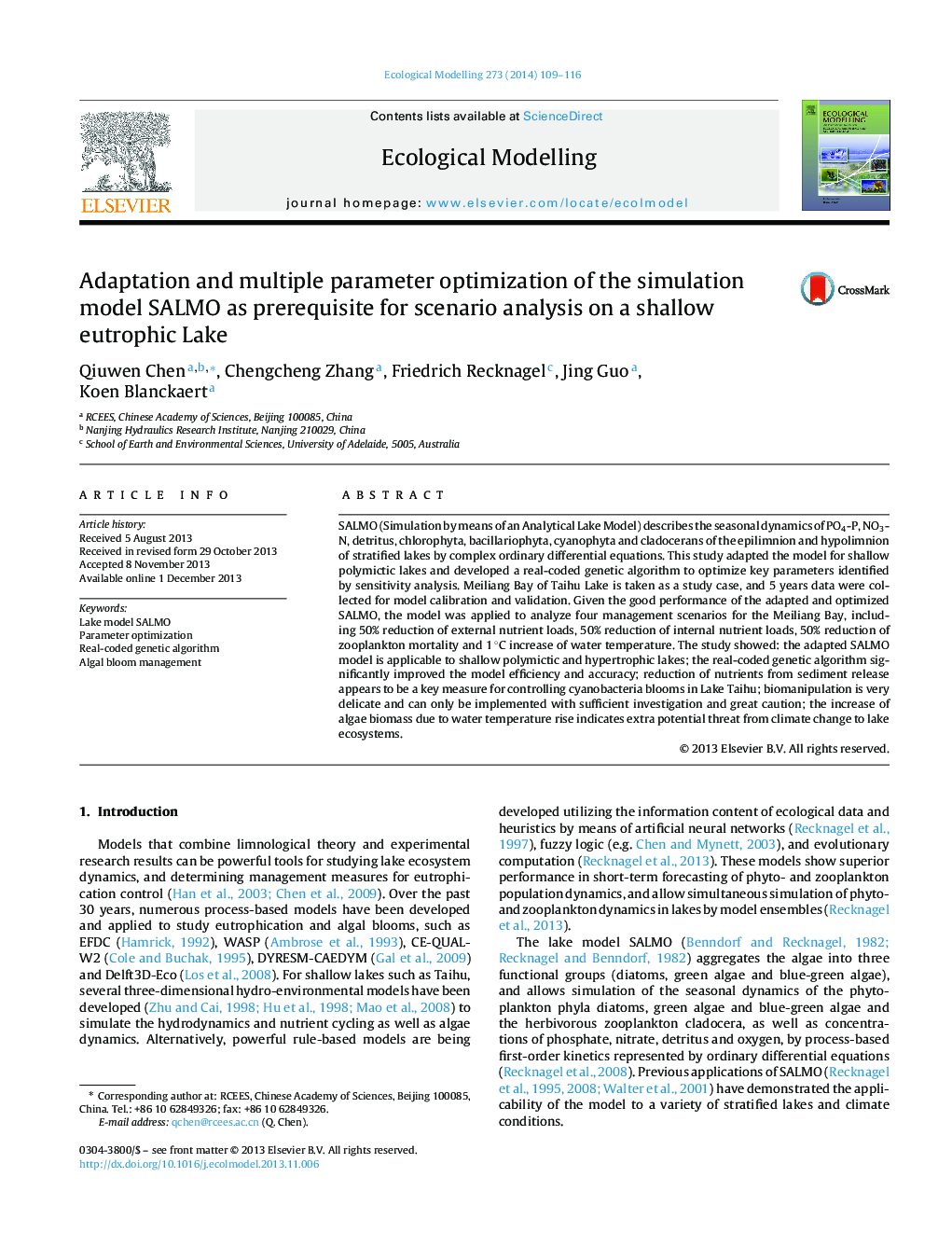| Article ID | Journal | Published Year | Pages | File Type |
|---|---|---|---|---|
| 6296919 | Ecological Modelling | 2014 | 8 Pages |
Abstract
SALMO (Simulation by means of an Analytical Lake Model) describes the seasonal dynamics of PO4-P, NO3-N, detritus, chlorophyta, bacillariophyta, cyanophyta and cladocerans of the epilimnion and hypolimnion of stratified lakes by complex ordinary differential equations. This study adapted the model for shallow polymictic lakes and developed a real-coded genetic algorithm to optimize key parameters identified by sensitivity analysis. Meiliang Bay of Taihu Lake is taken as a study case, and 5 years data were collected for model calibration and validation. Given the good performance of the adapted and optimized SALMO, the model was applied to analyze four management scenarios for the Meiliang Bay, including 50% reduction of external nutrient loads, 50% reduction of internal nutrient loads, 50% reduction of zooplankton mortality and 1 °C increase of water temperature. The study showed: the adapted SALMO model is applicable to shallow polymictic and hypertrophic lakes; the real-coded genetic algorithm significantly improved the model efficiency and accuracy; reduction of nutrients from sediment release appears to be a key measure for controlling cyanobacteria blooms in Lake Taihu; biomanipulation is very delicate and can only be implemented with sufficient investigation and great caution; the increase of algae biomass due to water temperature rise indicates extra potential threat from climate change to lake ecosystems.
Related Topics
Life Sciences
Agricultural and Biological Sciences
Ecology, Evolution, Behavior and Systematics
Authors
Qiuwen Chen, Chengcheng Zhang, Friedrich Recknagel, Jing Guo, Koen Blanckaert,
